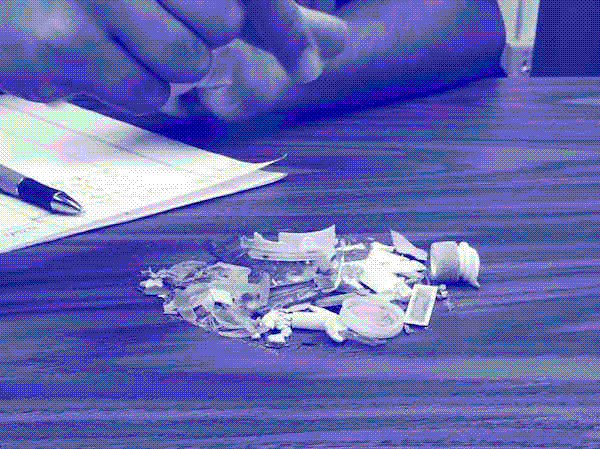SELECTED RESEARCH OUTPUTS
PAPER Categorization of plastic debris on sixty-six beaches of the Laurentian Great Lakes, North America
SYMPOSIUM Plastic Pollution, Toxicity and Policy Change, Plastic Pollution in the Great Lakes: Industry and Invisibility, The Plastic Conservation Conundrum, Sustainable Museums
EXHIBITION Plastic Heart: Surface All the Way Through (Toronto)
ARTICLE The Consequence that is Plastiglomerate
TALK If Discards Kept Travel Journals
MEDIA Plastic Permanence: Research Shows Plastic Becoming Part of the Great Lakes Lakebed
PUBLICATION Microplastics in the Great Lakes: 1941 Particles per Pound of Sediment
SYMPOSIUM Kelly Jazvac at MoMA R&D Salon 32: Plastics
PRESENTATION A Pan-Great Lakes Study of Plastic Pellet Distribution
ARTICLE Kelly Wood. The Great Lakes: Accumulations. Photography and Culture Journal.
ARTICLE Embracing an Interdisciplinary Approach to Plastics Pollution Awareness and Action
JOURNAL ARTICLE Embracing an Interdisciplinary Approach to Plastics Pollution Awareness and Action
TALK Ecologies of Waste: A Conversation at the work of WIND AIR LAND SEA
PRESENTATION Plastic Debris Pollution in Freshwater Environments of the World
EXHIBITION Plastic Entanglements: Ecology, Aesthetics, Materials
BOOK LAUNCH Kelly Jazvac and Kirsty Robertson in conversation at Plastiglomerate launch at Art Metropole
TALK Kelly Jazvac in conversation with Paige West, hosted by e-flux and FIERMAN.
EXHIBITION Proof of Performances. Kelly Jazvac at Gallery TPW
PUBLICATION Christina Battle in conversation the Dr. Lorena Rios (PDF)
ARTICLE Kirsty Robertson. Plastiglomerate. eflux journal.
A Comprehensive Investigation of Industrial Plastic Pellets on Beaches Across the Laurentian Great Lakes and the Factors Governing Their Distribution
By Patricia Corcoran, Johanna de Haan Ward, Ian Arturo, Sara Belontz, Tegan Moore, Carolyn Hill-Svehla, Kirsty Robertson, Kelly Wood, and Kelly Jazvac. In Press in Science of the Total Environment. July 25, 2020.
“Industrial, pre-consumer pellets are a major type of plastics pollution found on shorelines worldwide. This study investigates the distribution and characteristics of plastic pellets accumulated on beaches of the Laurentian Great Lakes of North America and provides a “snapshot” of pellet distribution in a lake system that accounts for 21% of the world’s freshwater reserves.”
The Consequence that is Plastiglomerate
By Patricia Corcoran and Kelly Jazvac. Published in Nature Reviews on January 13, 2020.
“First documented in 2014, plastiglomerate continues to proliferate across the Earth’s surface. While these materials represent long-lasting symbols of anthropogenic impacts on the environment, they also highlight the need to address the global plastic crisis.”
The Great Lakes: Accumulations
By Kelly Wood, Photography and Culture Journal. April 2019.
“Plastic waste maps onto a visible/invisible continuum, on the one hand characterized by elaborate excess, and on the other by near invisibility. These structural violences to our environments can be slow to register on the ground, and slow to emerge into our consciousness.”
Embracing an interdisciplinary approach to plastics pollution awareness and action. The Society for the Diffusion of Useful Knowledge Issue 04: Shoring
The Society for the Diffusion of Useful Knowledge is a serial broadsheet publication produced by the Blackwood Gallery, University of Toronto Mississauga, as part of The Work of Wind: Air, Land, Sea.
Embracing an interdisciplinary approach to plastics pollution awareness and action. AMBIO: A Journal of the Human Environment
By Sara Belontz. Published in AMBIO: A Journal of the Human Environment.November 17, 2018.
This paper considers how an interdisciplinary approach to the “wicked problem” of plastics pollution offers unique and important collaborative possibilities. Considering first how artists and scientists might respond differently to tracking, mapping, understanding, and representing plastics pollution, we then look for potential points of commonality across disciplinary difference. In respect to the urgent and multifaceted problem of marine plastics pollution in the Great Lakes region, we ask: what are some of the successes and pitfalls of bringing together diverse approaches and interests? The paper concludes with a clear strategy: a set of instructions geared towards building successful interdisciplinary collaborations. Ultimately, we conclude that a strong relationship amongst scientists and artists is possible, fruitful, and indeed warranted when shared goals are the driving principle of the group.
Plastiglomerates: Kelly Jazvac and Kirsty Robertson in conversation with Petrina Ng and Rachel Wallace of Durable Good Publishing.
Plastiglomerates considers how artist Kelly Jazvac’s sculptural practice is situated amongst her collaborative research in diverse fields: earth sciences, environmental activism, and cultural studies. The book features an interview between Jazvac and geologist Patricia Corcoran; essays by Jonathan Griffin and Kirsty Robertson; and new images by Kelly Wood.
Plastiglomerates launched in Canada at Art Metropole, Toronto, along with a window exhibition “Big Asks” by Jazvac and Durable Good.
PROOF OF PERFORMANCES: Christina Battle in Conversation with Dr. Lorena Rios
To accompany Kelly Jazvac’s exhibition Proof of Performances, Gallery TPW commissioned a text featuring artist Christina Battle and Dr. Lorena Rios (Natural Sciences Department, University of Wisconsin–Superior) discussing microplastic pollution and Jazvac’s practice. PDF DOWNLOAD
Plastiglomerate
By Kirsty Robertson, e-flux Journal #78 – December 2016
“The ready-made geologic being of plastiglomerate speaks to more than pollution: also geology, the deep time of Earth, colonization, human-animal knowledges, currents of water, and the endless unfolding and collapse of life on Earth.”
An Anthropogenic Marker Horizon in the Future Rock Record
By Patricia L. Corcoran, Charles J. Moore, and Kelly Jazvac. Published in GSA Today. June 2014.
“Here, we report the appearance of a new “stone” formed through intermingling of melted plastic, beach sediment, basaltic lava fragments, and organic debris from Kamilo Beach on the island of Hawaii. The material, herein referred to as “plastiglomerate,” is divided into in situ and clastic types that were distributed over all areas of the beach.”
